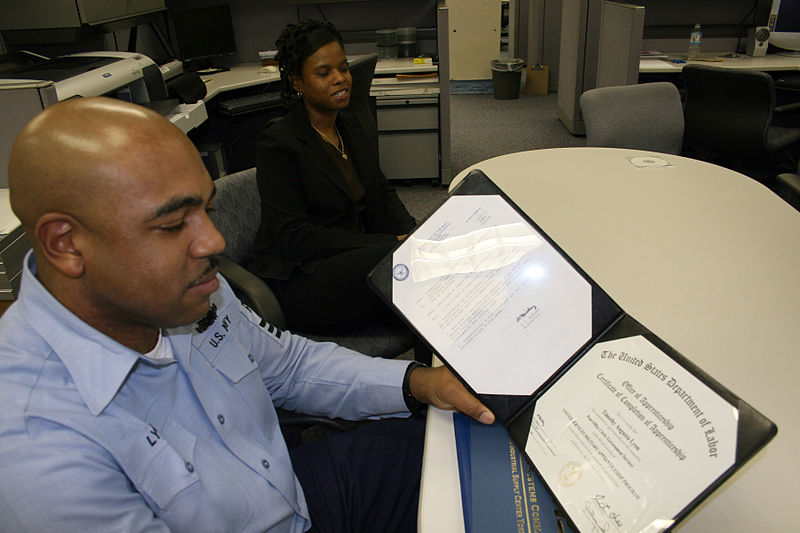
Apprenticeship programs continue to be an effective but highly underutilized workforce-training tool in the United States, a new report from the Center for American Progress (CAP) finds.
Combining on-the-job training with classroom instruction, apprenticeships allow businesses to meet the demand for skilled workers while helping workers find jobs that offer higher wages and employment outcomes. Apprenticeships also are good for the economy, the report notes — one recent study in Washington state showing that taxpayers received $23 in net benefits for every $1 in state investments.
But as CAP reports, the United States lags behind other industrialized nations when it comes to apprenticeships, including England, Scotland, Switzerland, France, and Germany. The U.S. had about 375,000 registered apprentices in 2013 through the Department of Labor’s Office of Apprenticeship. England had more than five times as many new apprentices in 2012, even though its population is roughly one-sixth of that of the United States.
There’s a lot more the U.S. can do to establish a larger apprenticeship program, including offering support to help employers offset the costs of sponsoring apprentices, CAP argues. And things appear to be looking up:
U.S. policymakers increasingly look to apprenticeship as a key tool to develop a skilled workforce and to connect workers to good jobs. The Obama administration is investing in apprenticeship by making $100 million available for American Apprenticeship Grants through the DOL. These funds will support promising partnerships, launch new apprenticeships in high-growth fields—such as information technology, health care, and advanced manufacturing—and scale models that work.
Workers and their skills drive our economy. But the U.S. economy will not reach its full potential unless the U.S. manufacturing sector is strong, and the sector needs a capable workforce to succeed.
And workforce training is an essential part of encouraging manufacturing growth. Along with programs offered through community colleges, vocational high schools and labor-business partnerships, apprenticeships can help workers develop the skills they need to succeed in manufacturing.
We often hear about the so-called skills gap here at the Alliance for American Manufacturing (AAM), and we’ve got to tell you — it simply does not exist. As INC wrote earlier this year:
Yes, there are issues finding people for specific jobs in specific industries; for the labor force as a whole, however, the skills-gap “crisis” is no such thing. And to the extent that your business is having problems, to a large degree, the solutions are in your hands. Specifically: Start training programs, pay competitive wages, and work with governments and community colleges.
CAP is right. The United States is falling behind when it comes to apprenticeships, and should do more to encourage this “critical workforce training tool.” As we’ve seen time and time again, if American workers are offered the opportunity, they will step up and do the work to succeed.
